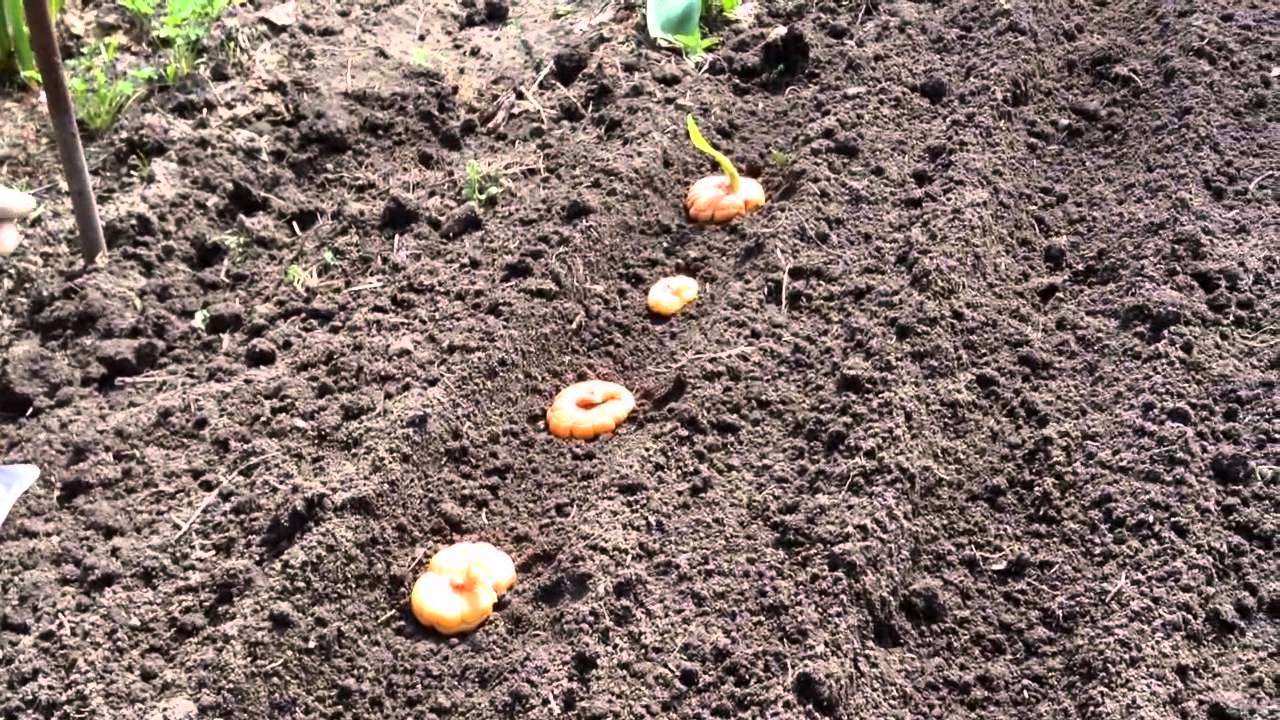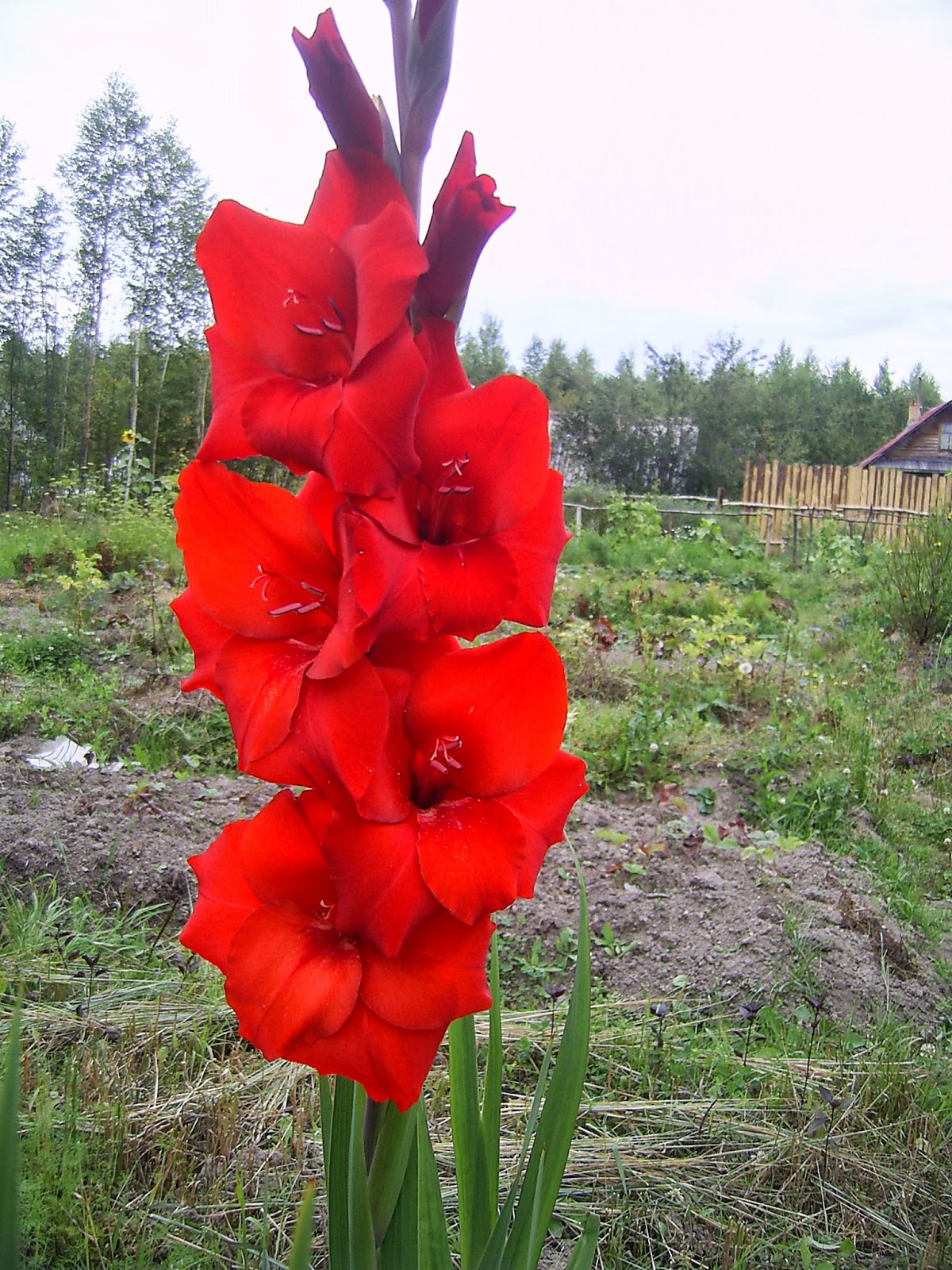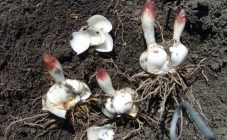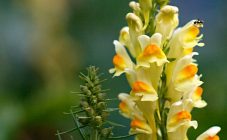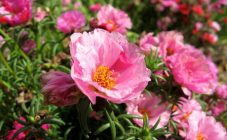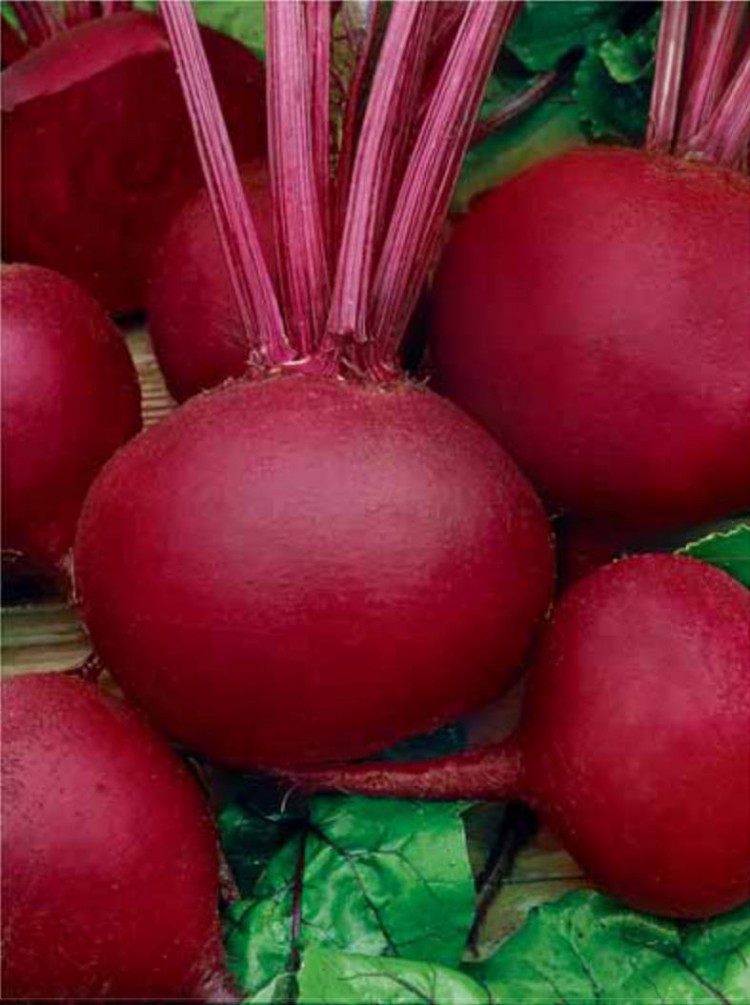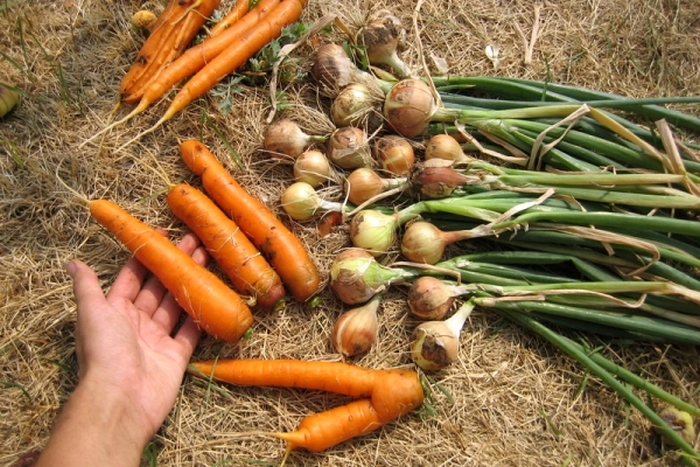Content:
The key to high-quality plantings of gladioli is a competently carried out planting of these plants. To do this, you need to know how and when to plant them, that is, the basic agrotechnical requirements.
When to plant gladioli
Can gladioli be planted in July? The best option for planting gladiolus bulbs in open ground is the period from the last April decade to the first days of June. The more specific date depends on the location of the territory. So, in the southern regions of Russia, the planting of gladioli at the end of April is widely practiced. On the territory of the Moscow region and other regions of the Central strip, this procedure is usually shifted by 2-2.5 weeks. In the Leningrad Region, the Urals and Siberia, it is better to plant bulbs in late May - early summer.
When is the best time to plant gladioli? The basic rule for all regions is to warm up to a temperature of 10 ° C by the time of planting 10-15 cm of the upper soil layer. Failure to comply with this rule will lead to the fact that the plant in insufficiently heated soil will slowly develop the root system, full nutrition of the aboveground part of gladioli will be impossible. In addition, by this time the risk of recurrent spring frosts should be avoided.
So is it possible to plant gladioli in July? Not recommended as these plants tend to form many leaves but never flower.
Gladioli: preparing for planting
A month before disembarkation, you need to purchase planting material, and if it is prepared yourself, it is recommended to get it out of the refrigerator or other storage places. Gladiolus bulbs must be in good condition, smooth and clean, without symptoms of any disease or mechanical damage. Each should have 1-2 shoots, slightly moved in growth. In addition, they should have normally distinguishable root tubercles and roots that have begun to grow weakly.
Surface scales are removed from the bulbs. In some cases, small marks are found on their surface, which are symptoms of a bacterial scab. Such bulbs can still be saved by cutting out damaged areas, followed by processing the cut points with foundation or brilliant green.
Peeled and prepared onions are laid out on a light, flat surface in partial shade, so that they do not get direct sunlight. This will speed up the germination of the bulbs and the flowering of gladioli.
Before planting the bulbs, you need to treat them with immunocytophyte, sodium humate or any other growth stimulant. Also, the planting material requires protection from pests and fungal diseases, which is provided by soaking it in phytosporin, foundation or oxychoma for half an hour. In the absence of the possibility of using these drugs, potassium permanganate is allowed as an alternative. To do this, 1 g of potassium permanganate is dissolved in a bucket of water and the bulbs are placed there for 2-3 hours. At the end of the procedure, the planting material is laid out on the surface of moistened sawdust and left in this state for 2-3 days.
Gladioli: planting bulbs outdoors
Like all cultivated plants originating from the Mediterranean or Africa, gladioli prefer to grow in warm conditions. Therefore, for this culture, you need to select an elevated and well-illuminated plot of land, which is not shaded by tall trees. In shady conditions, gladioli, especially of late varieties, will not be able to bloom.
Also, the site should not be close to groundwater and drafts. If possible, the beds are located from east to west.
Gladioli must be grown in full-fledged nutrient soil. The best soil option is light loam or sandy loam. If planting will be carried out on other types of soils, then they must be prepared in advance. On heavy clay or peaty soils, as well as on overly acidic soils, it makes no sense to plant gladioli, since they will not grow there. The plant requires soil with a pH of 6.5-6.8. To reduce soil acidity, add the following home remedies while digging in a volume of 150-200 g per 1 m²:
- dolomite flour;
- eggshell;
- lime.
It is recommended to dilute the excess clay on the site with sand, and add humus during the autumn digging. It is allowed to use fresh humus, but they do it with extreme caution, since this substance provokes intensive foliage growth to the detriment of flowering. On sandy soils, rotted compost or humus is added.
Preparing gladioli for planting in the spring means saturating the soil with nutrients: nitrogen, potassium and phosphorus. For this purpose, as early as September, the following substances are used per 1 m²:
- 15 g of superphosphate and ammonium nitrate;
- 30 g of potassium sulfate.
Crop care implies observance of crop rotation, therefore, it is not recommended to plant gladioli for more than 3 years in a row on the same plot, as this leads to the risk of spreading diseases. After gladioli, it is not recommended to plant the following crops on the plot, affected by diseases common with them:
- phlox;
- asters;
- tubers and root crops.
How to plant gladioli correctly? Planting holes are dug on the surface of the soil, the size of which should correspond to the dimensions of the bulbs and exceed their diameter by 4 times. Based on this, the depth of the hole for small bulbs is 8-10 cm, and for large ones - 10-15 cm. Do not deepen the roots excessively, as this will provoke delayed flowering and a reduction in the number of children.
The distance between the holes also depends on the bulb size: the larger they are, the larger the gaps. However, the maximum is 10 cm. The row spacing should be approximately a quarter of a meter. Another method of planting gladioli is practiced - in a solid ditch. The bulbs are evenly distributed on the bottom of such a depression at a distance of 15-20 cm from each other.
The wells are thoroughly shed and sprayed with phytosporin before planting. The bottom is covered with sphagnum moss or river sand with a layer of 2 cm.
After planting the bulbs of gladioli in the ground, they are covered with loosened earth. To conserve moisture in the soil, plantings are mulched. It is recommended to use peat as a mulching material. The first shoots are formed after 2-3 weeks, and until this moment it is recommended not to water the gladioli.
Features of seasonal planting in spring and autumn
Planting gladioli in the spring is preferable because it is more in line with the biological rhythms of the culture. This method is ubiquitous throughout Russia.
Autumn planting of culture is practiced only in the southern regions of Russia. This is due to the fact that even large bulbs die at a temperature of −2 ° C.Nevertheless, there are varieties that can withstand low temperatures above zero and even short temperatures below zero. Bulbs in a dense shell tolerate frosts better down to -4 ° C. If you provide sufficient cover for the plantings and soil, you can try planting before winter.
How to plant gladioli in pots or pots outside
The container for planting should be large enough and up to 35-40 cm deep. The diameter of the pot should be in the range of 20-30 cm. An excess of water is dangerous for plants, therefore, a drainage system must be organized. The material for drainage is located in the area of the base of the pot, and special holes are made at the bottom of it.
Potted Gladioli should grow on structured light soil. The soil must contain a sufficient amount of nutrients. The healthiest and fully developed bulbs are used as planting material, which must have a stem at least half a meter long.
Planting gladioli is one of the simplest, but at the same time, very important elements of their cultivation. If it is carried out correctly, it is easier to take care of the plants, since healthy and high-quality flowers will not require much attention to themselves, but, on the contrary, will delight the eye with their abundant flowering.

